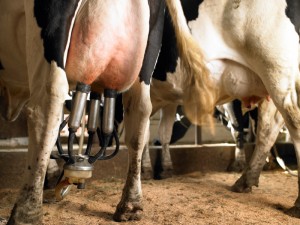An E. coli outbreak in Kentucky has sickened five children, four of whom are hospitalized with hemolytic uremic syndrome (HUS), a life-threatening condition that strikes young E.coli patients. The outbreak is the latest example of how children are disproportionately affected by illnesses associated with raw milk products and more likely than adults to suffer severe illness.
 This preventable, undue burden of illness on children is “primarily related to misinformation regarding the purported benefits of these raw dairy products,” according to the American Academy of Pediatrics. For example, some raw milk advocates claim that raw milk can cure asthma, allergies and lactose intolerance. However, there is no scientific evidence to support these claims.
This preventable, undue burden of illness on children is “primarily related to misinformation regarding the purported benefits of these raw dairy products,” according to the American Academy of Pediatrics. For example, some raw milk advocates claim that raw milk can cure asthma, allergies and lactose intolerance. However, there is no scientific evidence to support these claims.
What science has shown, is that raw milk has been found to contain viruses, parasites and dangerous bacteria such as Listeria, Campylobacter, Salmonella and E.coli. All of which pose serious health risks for children because their immune systems are not fully developed. Children are more likely to suffer serious complications if they contract a foodborne illness.
Contamination can happen through direct contact with fecal matter from the cow, microscopic organisms on the animal’s skin or hide; bovine infection or diseases, or through contact with insects, animals, human skin or soiled clothing. A barn or milking operation that looks clean doesn’t mean it’s bacteria-free.
Tests that are negative for bacteria are also not a guarantee that the milk is free of pathogens. Bacteria is not evenly distributed within a container of milk, it clumps together in clusters. So, milk taken from one part of the container may be free of bacteria, while another area contains a cluster of harmful bacteria. With E. coli, it takes 10 organisms to make someone sick.
Children were among those sickened in 82 percent of raw milk outbreaks reported to the Centers for Disease Control and Prevention (CDC) between 1998 to 2009 . And they are also disproportionately affected by sporadic illnesses associated with raw milk, according to a study by the Minnesota Department of Health. About 76 percent of those with food poisoning illnesses from raw milk that are not part of an outbreak are children five and under.




